Séminaire Etienne Dubiez - amphi Grégory à 13h30
Vendredi 18 Janvier 2019
à 13h30
Amphi GREGORY
Ecole polytechnique
Etienne Dubiez est un ancien thésard de l’équipe d’Yves Mechulam et Emmanuelle Schmitt. Il est actuellement en post-doc chez Nicola Gray à Édimbourg.
Son séminaire portera sur la régulation de la fonction de la polyA binding protein PABP1 par des modifications post-traductionnelles.
Can histone code-like 'acetylation-methylation switches' govern the multi-functionality of the Poly(A) Binding Protein 1 ?
Abstract: Poly(A)-binding proteins are multifunctional central regulators of gene expression. The best characterised family member, PABP1, acts as a primary determinant of translation efficiency and stability, regulates the fate of specific mRNAs, and participates in microRNA (miRNA)-mediated regulation and nonsense-mediated mRNA decay (NMD). These disparate, and sometimes antagonistic, functions require PABP1 to interact with numerous, functionally diverse, protein partners whilst simultaneously binding RNA. However, many partners bind identical or overlapping sites within PABP1, e.g. up to 16 different PABP-interacting motif 2 (PAM2)-containing proteins compete to bind with similar affinity at the same C-terminal PABC domain surface. Thus, it is unclear how these interactions, and therefore different PABP1-mediated functions, are co-ordinated.
Interestingly, PABP1 is subject to extensive, dynamically-regulated, post-translational modifications (PTMs), including putative lysine acetylation/methylation switches, in a manner reminiscent of the histone code. Specifically, molecular modelling of the acetylation or di-methylation of Lysine-606 (using available structures of the PABC domain in complex with PAM2 domains of eRF3a or PAIP2), suggested that modification of PABP1 Lysine-606 , which is critical in PABC-PAM2 interactions, may differentially affect these interactions.
Using an orthogonal synthetic biology approach with evolved tRNA-synthetase/tRNACUA pair from Methanosarcina bakeri, in combination with chemoselective reactions, we optimised methods developed for histones for the quantitative, site-specific installation of acetyl-lysine or dimethyl-lysine in recombinant PABP1, allowing comparative kinetic and structural studies. Together with cell-based assays, these will provide pivotal insights into the molecular consequences of PABP1 modification and their roles in co-ordinating post-transcriptional control of gene expression. The strategies for these investigations and current progress will be discussed.
Etienne Dubiez est invité par l’équipe « démarrage de la traduction ».
Pour plus d'informations :
Yves Méchulam - Tél : 01 69 33 48 85 - e-mail : Nous contacter


